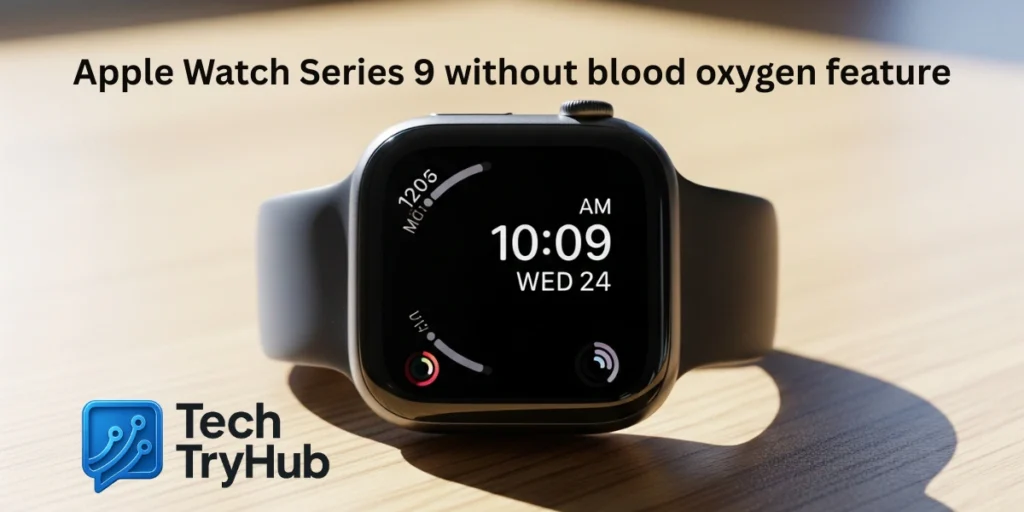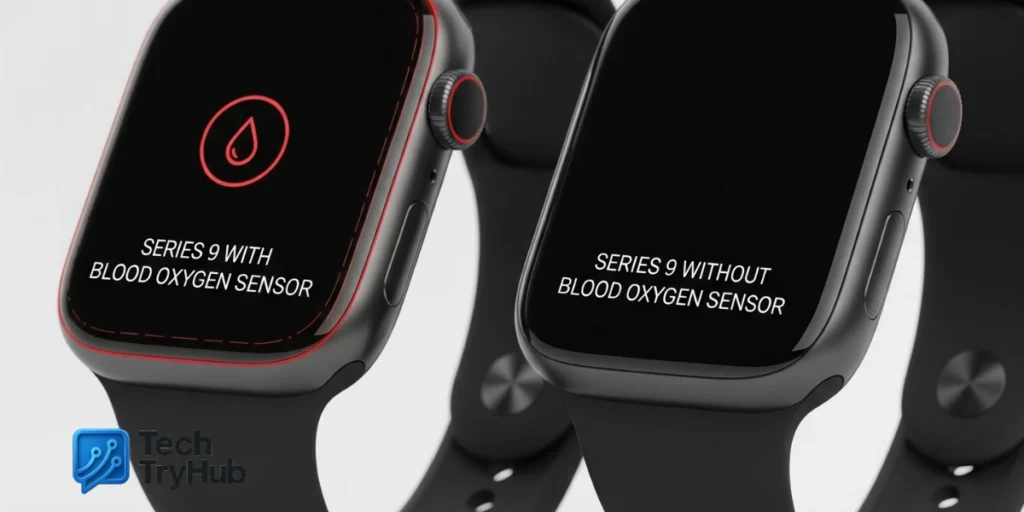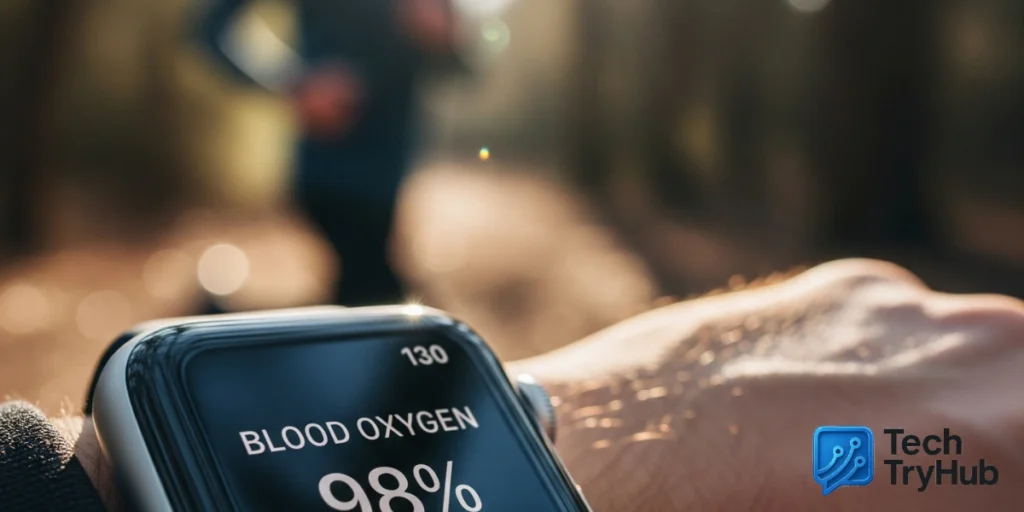Introduction – The Shock That Hit Apple Watch Users
Imagine buying a brand-new Apple Watch Series 9 or Ultra 2, excited to try every feature — only to discover the blood oxygen monitoring tool was suddenly missing. That’s exactly what happened to U.S. customers in early 2024.
The reason? A high-stakes legal battle between Apple and Masimo, a medical technology company specializing in pulse oximetry.
So, why apple watches banned masimo tech in the first place, and what does it mean for you? Let’s break it down.
The Legal Battle: Apple vs. Masimo
In January 2024, the U.S. International Trade Commission (ITC) upheld a ruling that certain Apple Watches infringed Masimo’s patents related to pulse oximetry — the technology behind blood oxygen monitoring.
Masimo’s claim: Apple copied patented sensor designs and algorithms after recruiting Masimo employees.
Apple’s defense: They argued their approach was unique and accused Masimo of trying to block competition.
When the ITC sided with Masimo, Apple faced a tough choice:
- Stop selling the affected models in the U.S.
- Or remove the disputed feature entirely.
Apple chose the second option for U.S. models — disabling blood oxygen monitoring in newly sold Series 9 and Ultra 2 watches.
Key Takeaways
- ITC ruled Apple violated Masimo’s patents.
- Dispute centered on pulse oximetry technology.
- Apple disabled the feature in U.S. models instead of halting sales.

Which Apple Watch Models Are Affected?
Not all Apple Watches are impacted. Here’s the breakdown:
| Apple Watch Model | Blood Oxygen Feature in U.S.? | Outside U.S.? |
|---|---|---|
| Series 9 (new units post-ban) | ❌ Disabled | ✅ Available |
| Ultra 2 (new units post-ban) | ❌ Disabled | ✅ Available |
| SE models | ✅ Available | ✅ Available |
| Older Series (Series 6–8) | ✅ Available | ✅ Available |
Important points:
- The ban applies only to new units sold after January 18, 2024 in the U.S.
- Existing owners keep the feature — it’s not remotely removed.
- International sales remain unaffected.
Key Takeaways
- Only Series 9 & Ultra 2 sold after January 2024 in the U.S. lost the feature.
- Older models and overseas buyers still have access.
- No retroactive feature removal for existing watches.

Why Blood-Oxygen Monitoring Matters
Blood oxygen measurement isn’t just a cool feature — it can be vital for:
- Tracking fitness performance
- Monitoring altitude adaptation for hikers and climbers
- Detecting possible respiratory issues early
Apple first introduced this in Series 6 (2020), marketing it as a wellness tool, not a medical device.
By removing it from new U.S. units, Apple is taking away one of its biggest selling points for health-conscious customers.
Key Takeaways
- Blood oxygen data helps with fitness and wellness tracking.
- Apple framed it as a lifestyle feature, not a medical tool.
- Its removal reduces health-focused appeal in U.S. models.

How Apple Is Responding
Apple’s response has been multi-layered:
- Feature Removal in U.S. Models – All new Series 9 and Ultra 2 units ship with the feature disabled.
- Ongoing Appeals – Apple is still fighting the ITC ruling in court.
- Exploring Workarounds – According to Bloomberg Apple is working on redesigned sensors or algorithms to avoid infringing Masimo’s patents.
This strategy allows Apple to keep selling its premium watches in the U.S. while buying time for a long-term solution.
Key Takeaways
- Apple disabled the feature rather than stop sales.
- Court appeals are ongoing.
- New designs may restore the feature in future models.

What This Means for Consumers
If you’re in the U.S. and want a new Apple Watch with blood oxygen monitoring, you have a few options:
- Buy an older model (Series 8, Series 7, etc.) still in stock.
- Import a model from outside the U.S. (though warranty policies may differ).
- Wait for Apple’s redesigned models post-lawsuit.
For current Series 9 and Ultra 2 U.S. owners — you won’t get the feature through software updates, as Apple is blocked from enabling it.
Key Takeaways
- Only older or international models retain the feature.
- New U.S. models won’t regain it unless Apple redesigns hardware/software.
- Buyers should consider timing and location before purchasing.
Expert Opinions & Market Impact
Industry analysts suggest:
- The case highlights how patent law can shape consumer tech.
- Masimo’s win may encourage other med-tech firms to enforce IP rights more aggressively.
- Apple may use this as motivation to innovate beyond current pulse oximetry methods.
In the short term, U.S. buyers get a slightly less capable product — but Apple’s brand power likely keeps sales strong.
Key Takeaways
- Patent disputes can directly affect product features.
- This ruling may influence future tech-health partnerships.
- Apple will likely adapt with new designs.
Conclusion
The Apple vs. Masimo saga is a rare example of a patent dispute reshaping a flagship tech product in real time.
For now, why apple watches banned masimo comes down to a legal ruling, but the long-term impact may drive new innovation in wearable health tech.
If you’re considering buying, weigh your needs: do you value blood oxygen tracking enough to seek an older or international model?
Either way, this case is a reminder that even giants like Apple must play by the rules of intellectual property.
👉 Share this guide with fellow Apple fans and check our other deep dives into wearable tech.
FAQ – Why Apple Watches Banned Masimo
1. Why did Apple remove blood oxygen monitoring from new watches?
Because the ITC ruled Apple’s implementation infringed Masimo’s pulse oximetry patents.
2. Does this affect existing Apple Watch owners?
No, only new Series 9 and Ultra 2 units sold in the U.S. after January 18, 2024.
3. Can I re-enable the feature on a banned model?
No it’s disabled at the firmware level and legally restricted.
4. Are watches outside the U.S. affected?
No, the feature works normally in international markets.
5. Will the feature return?
Possibly if Apple wins its appeal or releases redesigned hardware.
6. Does the ban apply to Apple Watch SE?
No, SE models retain the feature.
7. Is blood oxygen monitoring medically accurate?
Apple markets it as a wellness feature, not a diagnostic tool